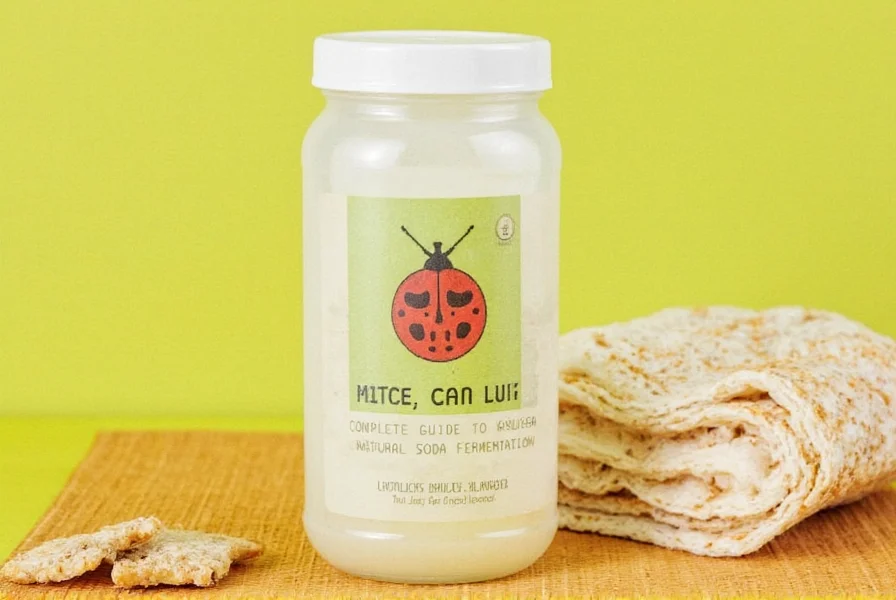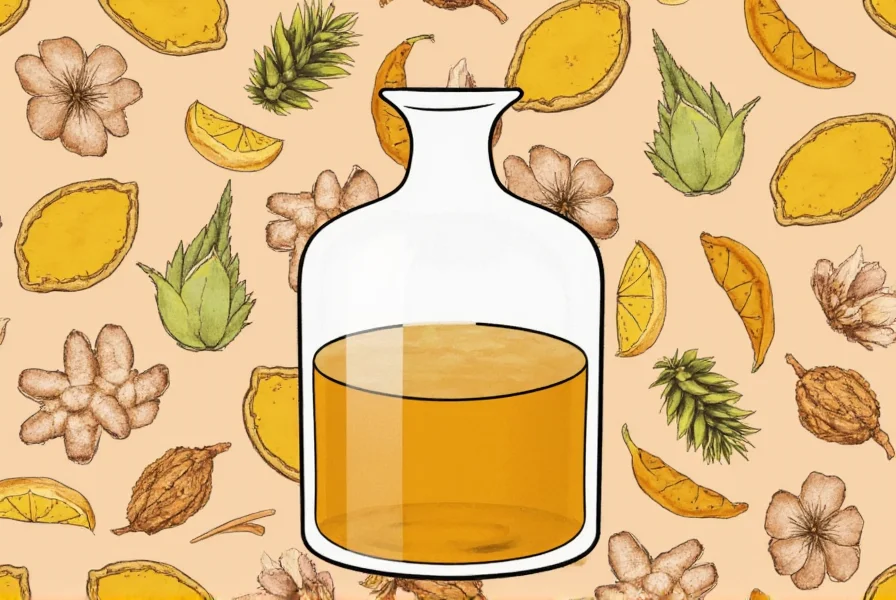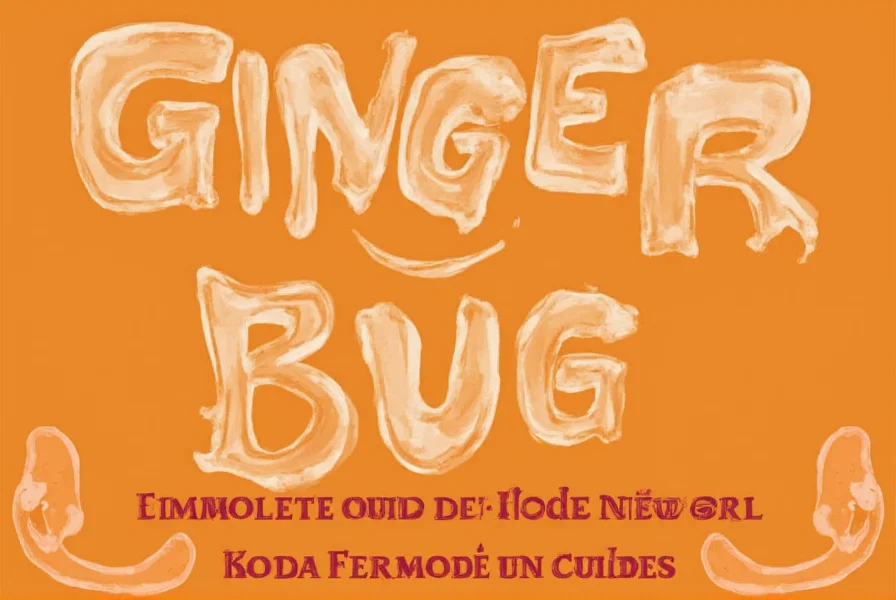Understanding the Ginger Bug: Nature's Fermentation Powerhouse
For centuries, home fermenters have relied on wild fermentation starters to create naturally carbonated beverages. The ginger bug stands out as one of the most accessible and reliable options for beginners exploring the world of homemade sodas. Unlike commercial yeast, which provides predictable but limited results, a ginger bug harnesses diverse wild microorganisms naturally present in our environment, creating complex flavors and beneficial probiotics.
Why Choose a Ginger Bug Over Commercial Alternatives
Ginger bugs offer several compelling advantages for home fermentation enthusiasts. They're incredibly cost-effective compared to purchasing commercial cultures, requiring only basic kitchen ingredients. More importantly, they introduce a diverse microbiome to your ferments, creating beverages with nuanced flavors and significant probiotic benefits that single-strain commercial yeasts can't match.
The natural fermentation process using a ginger bug preserves more of the original ingredients' nutritional value while creating beneficial enzymes and organic acids. This makes ginger bug-fermented beverages not just refreshing but potentially supportive of digestive health—a quality increasingly valued by today's health-conscious consumers.
Essential Ingredients for a Successful Ginger Bug
Creating an effective ginger bug requires just three basic ingredients, but the quality of each component significantly impacts your results:
| Ingredient | Recommended Type | Avoid |
|---|---|---|
| Ginger root | Organic, unpeeled | Non-organic (waxed/pesticide-treated) |
| Sugar | Organic cane sugar, rapadura, or sucanat | Artificial sweeteners, honey (can inhibit certain microbes) |
| Water | Filtered, non-chlorinated | Tap water with chlorine/chloramine |
The ginger's natural oils and the microorganisms living on its skin provide the essential wild yeast and bacteria needed for fermentation. Organic ginger is crucial because conventional ginger often contains pesticide residues that can inhibit microbial growth.

Step-by-Step Guide to Creating Your Ginger Bug
Follow this precise method to cultivate a robust ginger bug that will consistently produce excellent results:
Days 1-3: Initial Activation
- Grate 2 tablespoons of organic ginger (skin on) into a clean quart-sized jar
- Add 2 tablespoons of sugar and 2 cups of filtered water
- Cover loosely with a breathable cloth and secure with a rubber band
- Stir vigorously twice daily (morning and evening)
Days 4-7: Daily Feeding
- Each day, add 1 tablespoon grated ginger and 1 tablespoon sugar
- Stir vigorously twice daily
- By day 5-7, you should notice bubbles, slight cloudiness, and a pleasant tangy aroma
Your ginger bug is ready to use when it consistently produces bubbles within 1-2 hours after feeding. This indicates a healthy, active culture with sufficient microbial population for reliable fermentation.
Maintenance and Storage Techniques
Proper maintenance ensures your ginger bug remains viable for months or even years. The key is consistent feeding and appropriate storage conditions:
- Room temperature maintenance: Feed daily with equal parts ginger and sugar when kept at room temperature (68-75°F/20-24°C)
- Refrigeration: Store in the refrigerator and feed weekly for less frequent use
- Reviving dormant cultures: If your ginger bug has been stored without feeding, revive it with 2-3 consecutive daily feedings before using
- Long-term preservation: Create a ginger bug 'cake' by straining and mixing with additional sugar for freezer storage
Many home fermenters make the mistake of using metal utensils with their ginger bug, which can inhibit microbial activity. Always use glass containers and wooden or plastic utensils to maintain optimal culture health.
Troubleshooting Common Ginger Bug Issues
Even experienced fermenters encounter challenges with their ginger bugs. Understanding these common issues helps maintain a healthy culture:
Slow or No Bubbling
This typically indicates insufficient microbial activity. Solutions include:
- Increasing room temperature to 75-80°F (24-27°C)
- Using freshly grated ginger (pre-grated loses potency)
- Ensuring water is free from chlorine/chloramine
- Trying a different sugar source (rapadura often works better than white sugar)
Mold Development
While rare in properly maintained ginger bugs, mold can appear as fuzzy spots on the surface. If mold appears:
- Discard the entire batch immediately—do not attempt to salvage
- Thoroughly clean and sterilize all equipment before starting again
- Ensure your cloth cover is tightly secured to prevent contamination

Crafting Perfect Fermented Sodas with Your Ginger Bug
Once your ginger bug is active and bubbly, you're ready to create delicious homemade sodas. The basic process involves:
- Prepare your flavored base (fruit juice, herbal tea, or fruit-infused water)
- Cool the base to room temperature
- Add 1/4 to 1/2 cup of active ginger bug per quart of liquid
- Pour into flip-top bottles, leaving 1-2 inches of headspace
- Ferment at room temperature for 1-3 days until desired carbonation is achieved
- Refrigerate to slow fermentation and enjoy
The ideal fermentation time varies based on temperature and desired carbonation level. Warmer temperatures accelerate carbonation, while cooler temperatures produce slower, more controlled results. Always 'burp' bottles daily during active fermentation to prevent excessive pressure buildup.
Safety Considerations for Home Fermentation
While ginger bug fermentation is generally safe, following these guidelines ensures trouble-free results:
- Always use proper fermentation vessels designed to handle pressure
- Never use sealed containers without pressure-release mechanisms
- Refrigerate finished sodas to slow fermentation and prevent over-carbonation
- Discard any beverage with off-putting odors, slimy texture, or mold
- Start with small batches when experimenting with new recipes
Unlike some fermentation methods, properly maintained ginger bugs rarely produce harmful bacteria due to the competitive environment created by beneficial microbes. However, proper hygiene and clean equipment remain essential for safe fermentation practices.
Ginger Bug Versus Commercial Yeast: A Practical Comparison
Understanding the differences between ginger bug fermentation and commercial yeast helps determine which method best suits your needs:
- Ginger bug: Creates complex flavor profiles, contains diverse probiotics, requires daily maintenance, produces naturally carbonated beverages with subtle fizz
- Commercial yeast: Provides consistent, predictable results, requires no maintenance between uses, creates stronger carbonation, lacks probiotic diversity
Many experienced home fermenters maintain both options, using ginger bugs for everyday sodas and commercial yeast for special batches requiring specific characteristics. The choice ultimately depends on your priorities—complexity and health benefits versus consistency and convenience.
Advanced Ginger Bug Applications
Once you've mastered basic ginger bug soda making, consider these advanced applications:
- Creating ginger bug vinegar through extended fermentation
- Using ginger bug as a leavening agent in certain bread recipes
- Developing complex flavor profiles through sequential fermentations
- Creating ginger bug-based shrubs (drinking vinegars)
- Experimenting with different sugar sources to influence flavor development
Professional fermenters often develop specialized ginger bug cultures by selectively feeding with particular ingredients to enhance specific flavor compounds. This advanced technique requires careful observation and documentation but can yield truly unique results.











 浙公网安备
33010002000092号
浙公网安备
33010002000092号 浙B2-20120091-4
浙B2-20120091-4